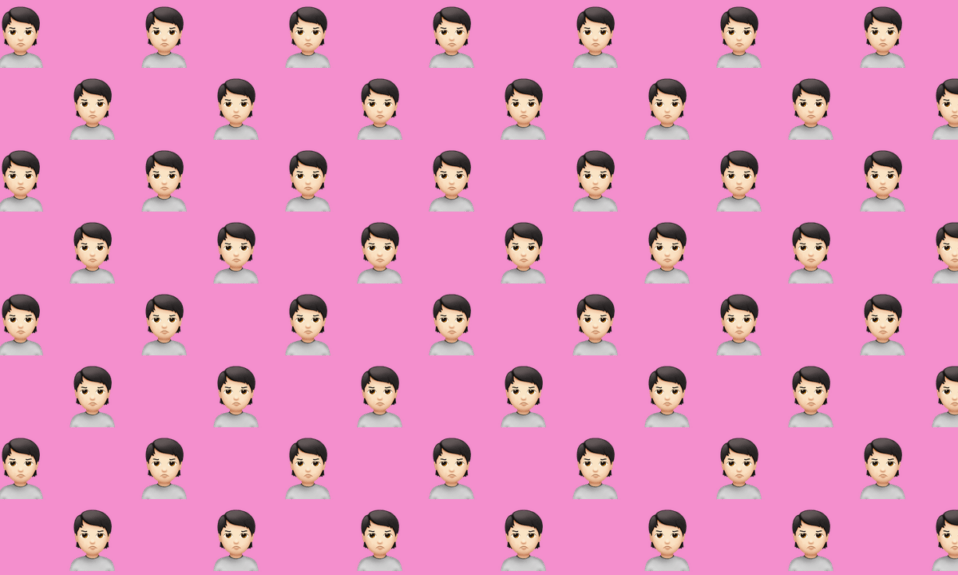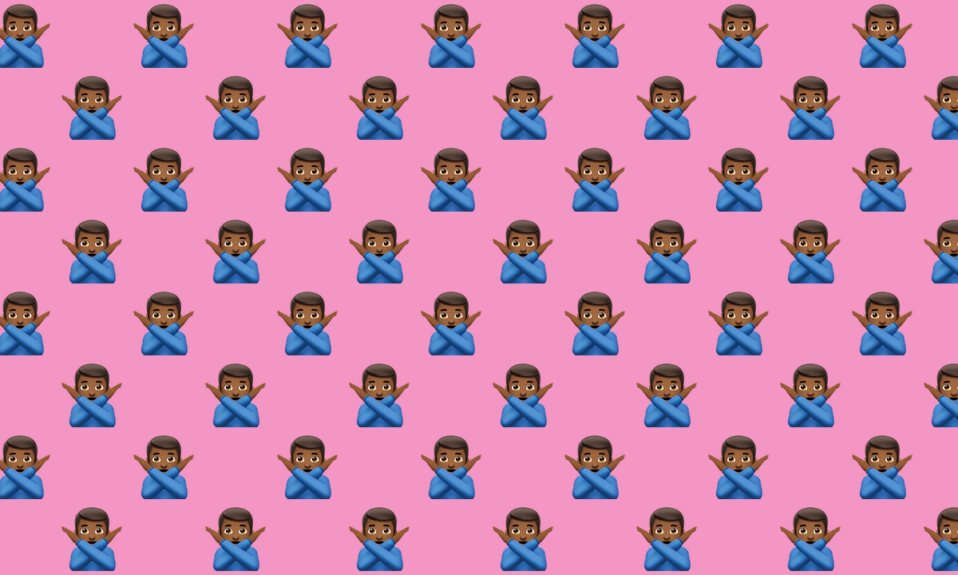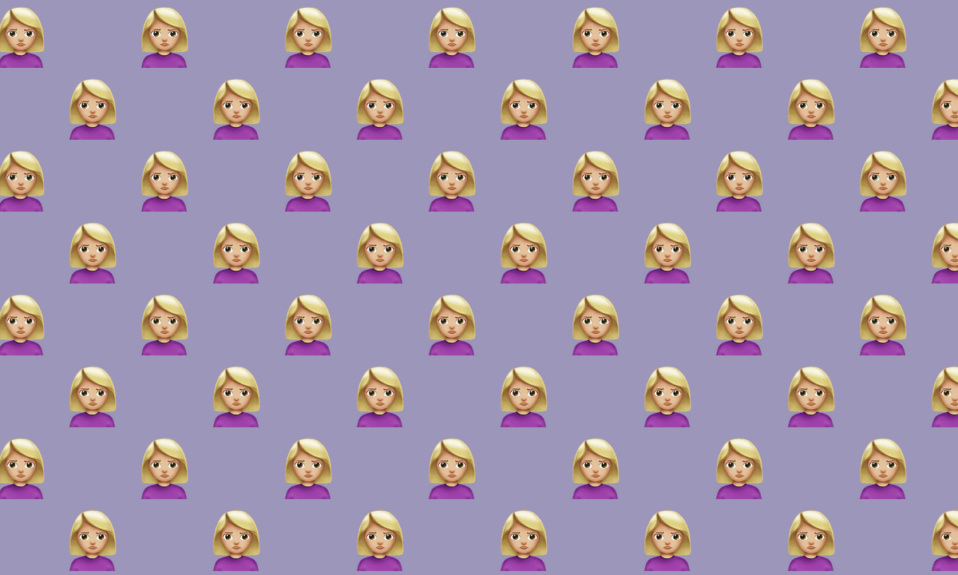What Does 🙎🏻 Person Pouting: Light Skin Tone Emoji Mean?
The 🙎🏻 person pouting: light skin tone emoji is a versatile emoji that can convey a range of emotions and meanings. Here are some possible interpretations and uses of the 🙎🏻 person pouting: light skin tone emoji:
-
Displeasure or Frustration: The 🙎🏻 person pouting: light skin tone emoji can be used to express displeasure or frustration with a situation or person. It can convey a sense of annoyance or disappointment.
- “I can’t believe they canceled the concert. 🙎🏻”
- “I’m so tired of dealing with this traffic every day. 🙎🏻”
-
Playful Teasing: The 🙎🏻 emoji can also be used in a playful or teasing manner. It can be used to jokingly express mock annoyance or to playfully express disagreement.
- “Oh, you think you’re so funny. 🙎🏻”
- “You’re always late. 🙎🏻”
-
Disappointment: The 🙎🏻 emoji can be used to express disappointment with a specific outcome or result.
- “I didn’t get the job I interviewed for. 🙎🏻”
- “The movie didn’t live up to my expectations. 🙎🏻”
-
Seeking Empathy or Support: The 🙎🏻 emoji can be used to seek empathy or support from others. It can be used to express a need for understanding or validation.
- “I’m feeling really down today. 🙎🏻”
- “I just need someone to talk to. 🙎🏻”
-
Self-Pity: The 🙎🏻 emoji can be used to express self-pity or to emphasize a feeling of being misunderstood or unappreciated.
- “Nobody ever listens to me. 🙎🏻”
- “I always have to do everything myself. 🙎🏻”
It’s important to note that the meaning of emojis can vary depending on the context and the individual using them. These are just some common interpretations of the 🙎🏻 emoji. You can also find more emojis related to emotions and expressions on our website, such as the 😔 pensive face emoji or the 😢 crying face emoji.
🙎🏻 Person Pouting: Light Skin Tone Design
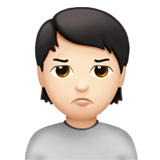


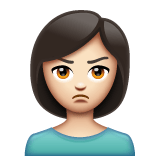
🙎🏻 Person Pouting: Light Skin Tone Emoji Meaning From A Girl?
When a girl uses the 🙎🏻 emoji, it typically indicates one of the following meanings:
-
Frustration or Displeasure: The 🙎🏻 emoji can be used to express frustration or displeasure with a situation or person. It conveys a sense of annoyance or disappointment. For example:
- “I can’t believe they canceled the plans last minute. 🙎🏻”
- “I’m so tired of dealing with this homework assignment. 🙎🏻”
-
Seeking Empathy or Support: The 🙎🏻 emoji can be used to seek empathy or support from others. It is a way for girls to express their need for understanding or validation. For example:
- “I’m feeling really down today. 🙎🏻”
- “I just need someone to talk to. 🙎🏻”
-
Expressing Disappointment: The 🙎🏻 emoji can be used to express disappointment with a specific outcome or result. It conveys a sense of letdown or sadness. For example:
- “I didn’t get the job I interviewed for. 🙎🏻”
- “The movie didn’t live up to my expectations. 🙎🏻”
-
Playful Teasing: Sometimes, the 🙎🏻 emoji can be used in a playful or teasing manner. It can be used sarcastically to indicate mock annoyance or disagreement. For example:
- “Oh, you think you’re so funny. 🙎🏻”
- “You’re always teasing me. 🙎🏻”
-
Self-Pity: The 🙎🏻 emoji can be used to express self-pity or to emphasize a feeling of being misunderstood or unappreciated. It conveys a sense of frustration or longing for recognition. For example:
- “Nobody ever listens to me. 🙎🏻”
- “I always have to do everything myself. 🙎🏻”
When navigating a conversation where a girl has used the 🙎🏻 emoji, here are some tips on how to reply:
-
Consider the Context: Pay attention to the context of the conversation and the girl’s personality. This will help you understand if she used the emoji playfully, sarcastically, or if there’s underlying frustration.
-
Ask for Clarification: If you’re unsure about the intended meaning behind the emoji, it’s always best to ask for clarification. This shows that you are engaged and interested in understanding her communication better.
-
Mirror her Emotions: If the girl used the 🙎🏻 emoji in a lighthearted or playful way, respond in a similar tone. It helps to continue the conversation on a light and empathetic note.
-
Offer Support or Validation: If the girl seems to be seeking empathy or support, respond with words of understanding or validation. Let her know that you’re there for her and willing to listen.
-
Use Relevant Emojis: If you’re unsure how to reply, you can use emojis that convey emotions such as 😔 (sad), 🤔 (thinking), or ❤️ (love). These can help continue the conversation and show your support.
Examples of how girls typically use the 🙎🏻 emoji over text:
- “I can’t believe they canceled our girls’ night out. 🙎🏻 It’s so disappointing!”
- “I’m feeling so overwhelmed with schoolwork. 🙎🏻 Can’t catch a break!”
- “I thought I aced the exam, but I got a lower grade than expected. 🙎🏻 Feeling bummed.”
- “You always tease me about my fashion choices. 🙎🏻 Can’t you just be nice for once?”
- “I feel like no one understands me sometimes. 🙎🏻 It’s frustrating.”
🙎🏻 Person Pouting: Light Skin Tone Emoji Meaning From A Guy?
When a guy uses the 🙎🏻 emoji, it can have similar meanings to when a girl uses it. Here are some possible interpretations of the 🙎🏻 emoji from a guy’s perspective:
-
Frustration or Displeasure: Like girls, guys may use the 🙎🏻 emoji to express frustration or displeasure with a situation or person. It can convey a sense of annoyance or disappointment. For example:
- “I can’t believe they canceled the plans last minute. 🙎🏻”
- “I’m so tired of dealing with this project. 🙎🏻”
-
Seeking Empathy or Support: Guys may also use the 🙎🏻 emoji to seek empathy or support from others. It can be a way for them to express their need for understanding or validation. For example:
- “I’m feeling really down today. 🙎🏻”
- “I just need someone to talk to. 🙎🏻”
-
Expressing Disappointment: The 🙎🏻 emoji can be used by guys to express disappointment with a specific outcome or result. It conveys a sense of letdown or sadness. For example:
- “I didn’t get the job I interviewed for. 🙎🏻”
- “The game didn’t go as expected. 🙎🏻”
-
Playful Teasing: Similar to girls, guys may use the 🙎🏻 emoji in a playful or teasing manner. It can be used sarcastically to indicate mock annoyance or disagreement. For example:
- “Oh, you think you’re so clever. 🙎🏻”
- “You always have to be right. 🙎🏻”
-
Self-Pity: The 🙎🏻 emoji can also be used by guys to express self-pity or to emphasize a feeling of being misunderstood or unappreciated. It conveys a sense of frustration or longing for recognition. For example:
- “Nobody understands what I’m going through. 🙎🏻”
- “I always have to do things on my own. 🙎🏻”
While the meanings of the 🙎🏻 emoji can be similar for both guys and girls, it’s important to consider the individual’s personality and the context of the conversation. Guys may have their own unique way of using the emoji, influenced by their personal style and communication style.
When trying to understand the meaning behind a guy’s use of the 🙎🏻 emoji, here are some tips on how to reply:
-
Dive into the Context: Always look at the surrounding text and the mood of the conversation. A guy’s usage of the 🙎🏻 emoji can vary widely based on these factors.
-
Ask with Curiosity: If you’re uncertain about what he meant, frame your question in a curious manner. For instance, “That pouting emoji caught my attention! What’s going on?”
-
Humor is Your Ally: More often than not, the 🙎🏻 emoji is used in jest. So, responding with humor or a funny gif can keep the conversation flowing.
Examples of how guys might use the 🙎🏻 emoji over text:
- “Can’t believe my favorite team lost again. 🙎🏻😔“
- “This traffic is killing me. 🙎🏻🚗“
- “Just got rejected by my crush. 🙎🏻😞“
- “Why does everything go wrong for me? 🙎🏻🤦♂️“
- “Forgot my wallet at home, now I can’t buy lunch. 🙎🏻🤷♂️“
Remember, individual interpretations of emojis may vary, and it’s essential to take into account the specific person’s communication style and the overall context of the conversation.
Does 🙎🏻 Person Pouting: Light Skin Tone Emoji Have A Hidden Meaning?
The 🙎🏻 emoji does not have a known NSFW or hidden meaning. It is often used to represent a person pouting or expressing dissatisfaction. It can be similar in usage to the 🙍🏻♀️ woman pouting: light skin tone emoji or the 🙎🏻♂️ man pouting: light skin tone emoji.
While there may not be specific popularity data available for the 🙎🏻 emoji, it can still be combined with other emojis to create fun and entertaining combinations. For example, pairing it with 😂 can represent a person laughing or finding something funny. Combining it with ❤️ can convey love or affection, while using it alongside 🤔 can indicate deep thought or contemplation.
The versatility of the 🙎🏻 emoji allows users to express themselves in different ways, whether it’s through humor, love, or introspection. So, don’t underestimate the power of this emoji, as it can add a unique touch to your messages and social media posts.
Looking For 🙎🏻 Emoji Combos?
Click above to generate some slangs
Related Emojis
Related emojis
🙎🏻 Emoji Codes
| Unicode Code Point(s) | 128590-127995 |
| HTML Dec | 🙎🏻 |
| Hex Code | 1F64E-1F3FB |
| HTML Hex | 🙎🏻 |
| CSS | 1F64E 1F3FB |
| C, C++ & Python | u1F64Eu1F3FB |
| Java, JavaScript & JSON | u1F64Eu1F3FB |
| Perl | x{1F64E} x{1F3FB} |
| PHP & Ruby | u{1F64E} u{1F3FB} |
🙎🏻 Emoji In Other Languages
| German | :schmollende_person_helle_hautfarbe: |
| Spanish/Castilian | :persona_haciendo_pucheros_tono_de_piel_claro: |
| French | :personne_qui_boude_peau_claire: |
| Japanese | :不機嫌な人_薄い肌色: |
| Korean | :뾰로통한_사람_하얀_피부: |
| Portuguese | :pessoa_fazendo_bico_pele_clara: |
| Italian | :persona_imbronciata_carnagione_chiara: |
| Persian | :آدم_ناراضی_پوست_سفید: |
| Indonesian/Malay | :orang_tidak_senang_warna_kulit_cerah: |
| Mandarin | :撅嘴_较浅肤色: |


